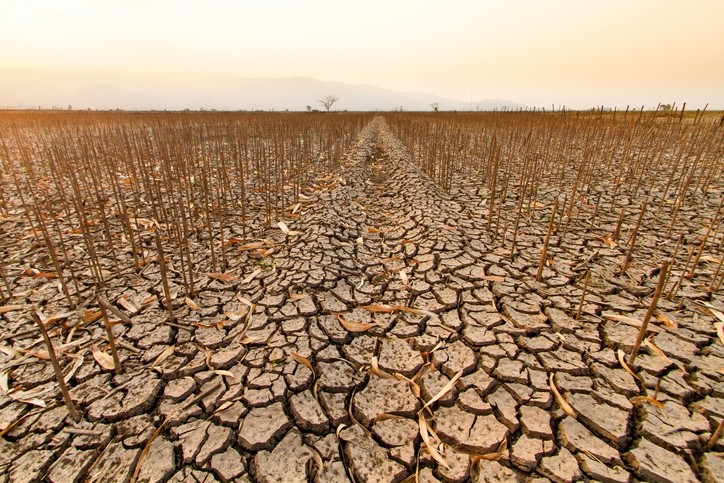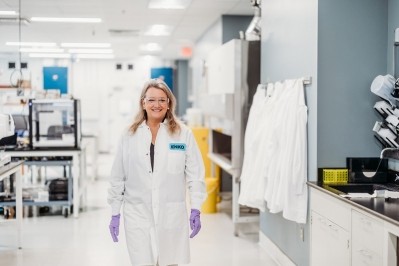Comment
Early warning systems eliminate hunger – so why the lack of investment?

Current global food production is sufficient to feed the planet twice over. Yet almost half the population, up to 3.6 billion people, live in regions highly vulnerable to environmental threats worsened by climate change such as drought, floods and other natural disasters that result in food insecurity and loss of lives and livelihoods.
Specifically, over 280 million people face acute food shortages. Often driven by these climate-caused disasters, communities are left scrambling to respond and recover.
This damaging cycle isn’t good enough in a world where we have the means – resources and technology - to feed everyone. Though disasters will always demand immediate response efforts, we can mitigate against the levels of damage through smart investment in early warning systems and community resilience.
With the advent of near global access to advanced earth observation data, satellite and digital tools and online communication channels, the potential for early warning systems to transform lives and tackle food shortages has never been greater.
Tech-enhanced foresight
Imagine being given the gift of foresight? Being able to see around corners, to anticipate with confidence the world around you and prepare?
Facing repeated shocks such as drought as well as other compounding threats like conflict or poverty, many countries in climate-vulnerable regions like East Africa, including Sudan, South Sudan, Somalia, Kenya and Ethiopia, become stuck in crisis-response cycles that force short-term blinkers on communities and prevent long-term investment into proactive management of climate risks.
Early warning systems are designed to forecast risks and expected impacts, conveying warnings about climate-related events before they occur.
Taking advantage of a unique blend of advanced data points and real-world social information allows early warning systems to confidently predict the onset of droughts and flooding, guiding decisions and actions by the people most affected.

Technological developments are reducing the likelihood of incorrect predictions, and they allow us to detect extreme weather events far earlier than before. Climate models are now capable of predicting extreme ocean conditions eight months before they occur.
In short, early warning systems help communities on the front lines of climate change act before disaster strikes. Action that can reduce the effects of shocks, preventing shocks becoming emergencies and protecting peoples’ lives, livelihoods, and productive assets.
It is crucial that we recognise and tackle these so improvements in forecasting translate into actual protection, measured in lives and livelihoods preserved. In practical terms, this means ensuring that alerts and warnings reach people most at risk in a timely and usable manner. In Kenya, despite being widely shared at county level, early warning information does not systematically reach pastoralists and in some instances where anticipatory actions were provided, they appeared to be out of sync with local strategies, reducing their efficacy.
Every penny counts for a climate-resilient future
In 2022, the United Nations recognised the importance of early warning systems with its Early Warnings for All initiative, a programme that aims to protect the entire global population with early warning systems by 2027. The accompanying action plan calls for investments of $3.1 billion per year across five years.
After three years, only 0.2% of humanitarian aid from OECD countries currently spent on anticipatory action, including early warning systems, despite it having been proven to be a more effective way of combatting food shortages than reacting after a crisis has occurred.
Yet despite the technology, and despite the prioritisation from global authorities and despite the promise of a solution, investment isn’t coming. Soliciting the support of governments or individual investors remains a challenge. Potential investors are more inclined to give during emergencies, as these elicit an emotional response, even if money spent ahead of time is more effective.
This is a challenge that demands those able to invest change their perspective. A simple shift in how we view investment priorities has the potential to save lives, protect incomes and enhance quality of live for more than half the world’s population. The choice is simple. Surely?
This is why Community Jameel supported the creation of the Jameel Observatory for Food Security Early Action as an international research partnership. Based at the International Livestock Research Institute (ILRI) in Nairobi, Kenya, it combines the local knowledge and concerns of communities facing on-the-ground threats of hunger with innovations in data science and humanitarian action; teaming up to devise solutions that can predict, prepare for, and overcome climate-related food security and malnutrition challenges in dryland areas.
The Jameel Observatory is a key centre within CGIAR helping to strengthen early warning systems. It works to address these challenges, ensuring that early warning systems reach all those affected by collaborating with local communities in the drylands to develop improved communication content and methods between them and early warning system providers.
In a world where food shortages are worsening – with 2.5x as many people vulnerable now as in 2010 – the need to change our ways is clear. Early warning systems, underpinned with strong individual and institutional capacities, have a vital role to play.
If the UN’s ambition to support all vulnerable regions with these systems is to be realised, the international community must ramp up investment and intensify its efforts to address this pressing challenge.

















